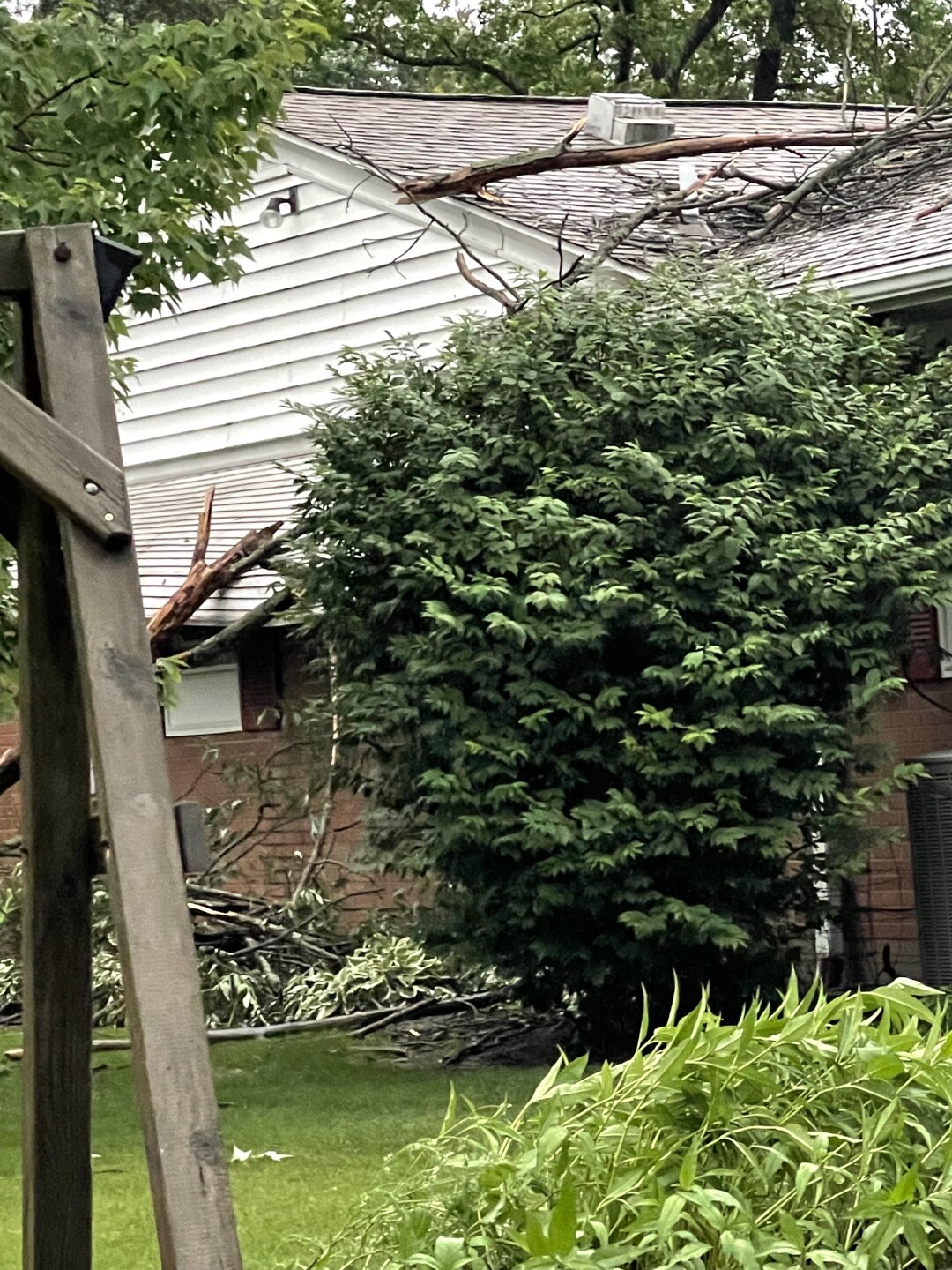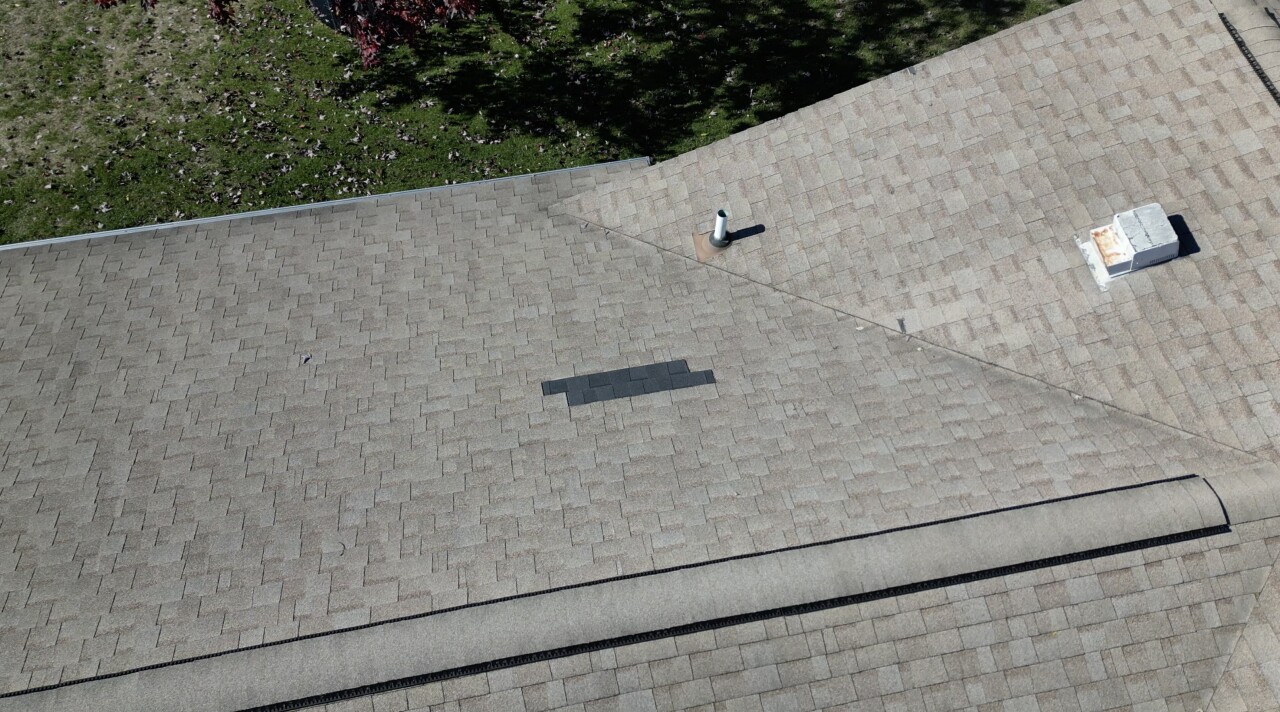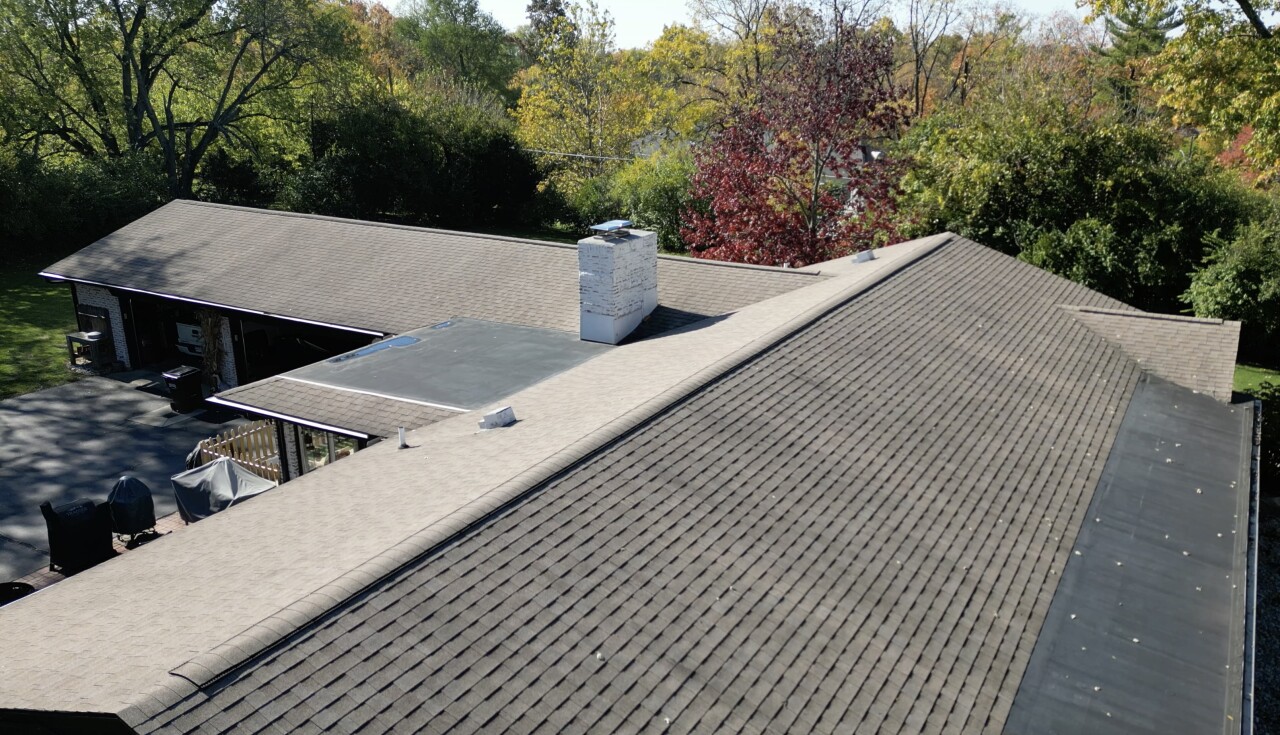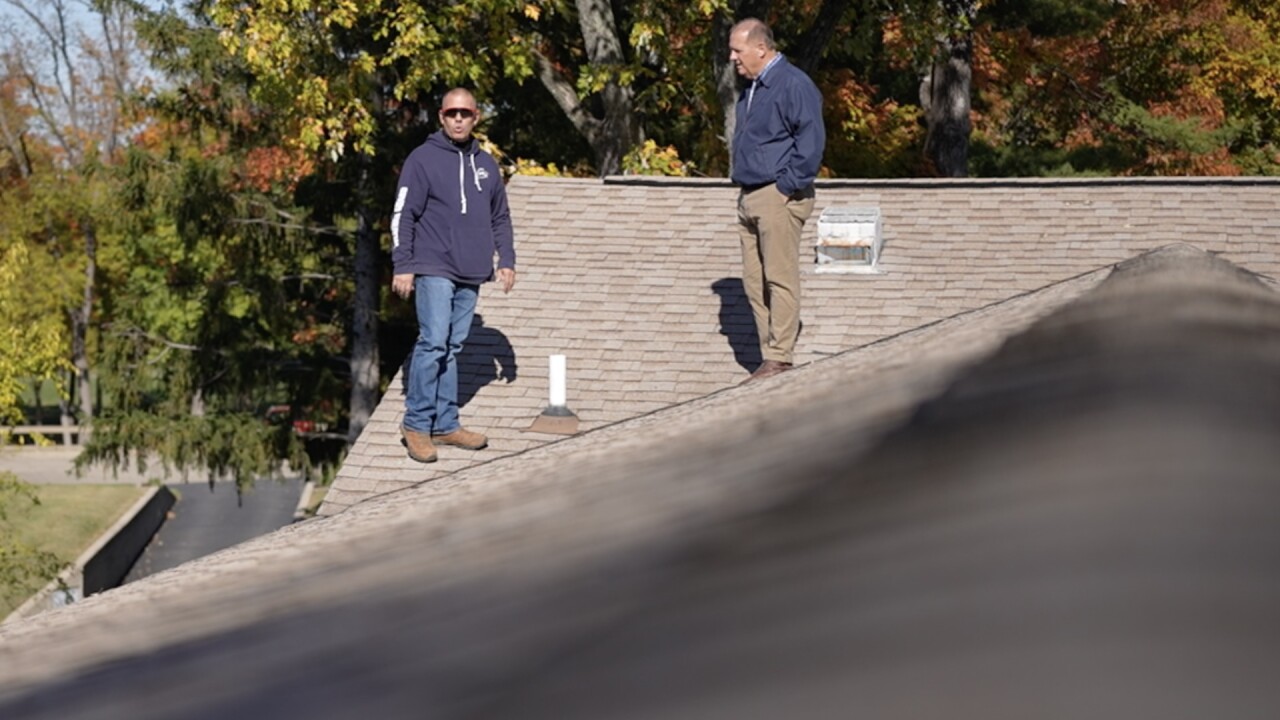MIDDLETOWN, Ohio — When a tree fell on their Middletown home in June 2022, Jim Leonard and Susie Breigenzer did not expect to be living with a leaky roof three and a half years later.
But that is what happened after the couple asked State Farm Fire & Casualty Co. to replace their entire roof, and the insurer offered to replace 22 shingles.
“They take your money every month,” Breigenzer said. “Maybe I’m naïve, but I assumed as a homeowner, ‘We have good coverage. It’s a reputable company. They’ve been around a long time. If something does happen, we’re going to be taken care of.’”
Leonard filed a lawsuit against State Farm because he was frustrated by its claims process. A Butler County judge dismissed the case, a decision upheld by an appeals court this month.
“State Farm will overwhelm you with tasks and language,” Leonard said. “I truly believe that they expect some people just to give up and drop the claim.”
State Farm declined to be interviewed for this story but defended its actions in a three-page letter to the Ohio Department of Insurance in May.
It also provided a statement to the WCPO 9 I-Team: “We have been working with our customer and their attorney since their loss and believe we have provided every benefit available to them within their policy.”

Bad weather, stingy insurers
Industry watchdog Martin Weiss said insurers are getting more aggressive at limiting claims on property and casualty coverage. It’s a trend that began in the 1990s and accelerated in the last decade, with an increasing number of weather events and climate disasters that each caused more than a billion dollars in property damage.
“They are setting guidelines, sending out directives to find any possible excuse to close the claim, no payment,” said Weiss, founder of Weiss Ratings in Palm Gardens, Fla. “And then leave it up to the customers to complain, try and figure it out.”
Ohio insurers are adopting a variety of approaches to limit expenses for hail and wind damage, according to a recent report by the Ohio Insurance Agents Association.

They're imposing higher deductibles, using depreciation to limit payments on older roofs, and increasing scrutiny of roof conditions when writing new policies or renewing old ones.
Insurance companies are also charging more for coverage, according to S&P Global.
S&P said the price of homeowners’ insurance increased at double-digit rates in 2023 and 2024. Ohio customers saw a 10.9% premium spike last year, while Kentucky jumped 11.3% and Indiana, 13.8%. Data for 2025 isn’t yet available.
Weiss Ratings has been tracking claims data since the early 2000s, using numbers pulled from state regulatory filings by the National Association of Insurance Commissioners, or NAIC.
Regulators use the data to keep tabs on the financial health of the industry.
In one recent report, NAIC said property and casualty insurers posted a $13.7 billion underwriting gain in the first half of 2025, driven by rising premiums and “corrective actions taken by insurers to combat increased loss costs.”
Weiss said those corrective actions include closing claims with no payments. He started tracking that stat more than 20 years ago, when the nation’s largest home insurers closed about 25% of claims with no payment. Weiss said the number has steadily risen since then, reaching 42% in 2024.
State Farm closed 31.9% of its claims with no payments in 2024. That's below Weiss Ratings’ average for 143 of the nation’s largest insurers. But it’s also up about 10 percentage points from State Farm’s numbers one decade ago, according to Weiss Ratings. And it represents a big number of closed claims for 2024.
“That’s 333,000 policies that were closed without payment,” Weiss said. “And it does not include the policies where it was delayed, does not include the policies where the company paid only a small percentage of what was really damaged.”

One claim’s chronology
For Leonard and Breigenzer, it was the size of State Farm’s settlement offer that triggered a three-year battle with the company.
Here’s a chronology of the controversy based on interviews, court filings and State Farm’s May 2025 response to a complaint the couple filed with the Ohio Department of Insurance:
- On June 13, 2022, a tree outside the kitchen window fell onto the couple’s Rosedale Road home, damaging a metal awning and leaving branches and debris on the corner of the L-shaped roof.
- On Oct. 4, 2022, the homeowners filed a claim with State Farm, reporting “water intrusion into the bathroom and kitchen ceilings,” according to State Farm’s letter to the state.
- On Oct. 22, 2022, State Farm sent an inspector, who reported: “12 damaged shingles were found on the rear slope and 10 on the right slope,” along with four square feet of damaged decking. That led to a tree-removal check for $882.88 and a second check for $3,540.40 to cover all other repairs.
- On Jan. 17, 2023, the homeowners countered with a $50,760 estimate from Weather Guard Roofing Ltd. Weather Guard said matching shingles could not be found for the roof. It also claimed more extensive repairs were required than State Farm’s inspector determined.
- On April 7, 2023, the homeowners sent an Appraisal Demand Letter to resolve the differing estimates. State Farm rejected that demand on May 3, 2023, asserting that appraisers “have no authority to decide whether certain items are covered or any other questions of coverage.”
- On June 2, 2023, the homeowners sued State Farm, alleging breach of contract and failure to act in good faith. It also sought a court order that would force State Farm to “engage in the appraisal process.”

Butler County Judge Greg Stephens sided with State Farm on the appraisal issue in August 2023, then ordered mediation in November. On June 18, 2024, Judge Stephens rejected the homeowners’ other claims because their attorney failed to enter their homeowners’ policy into evidence.
“Because the contract provisions are not before the court, the court is unable to determine” whether State Farm had “reasonable justification” for its coverage decisions, Stephens wrote.
On Sept. 9, 2024, the homeowners appealed Stephens’ ruling. The Twelfth Circuit Court of Appeals upheld Stephens’ dismissal on November 10.
Curiously, both rulings pointed to the lack of a full insurance policy in rejecting Leonard’s claims — but both cited excerpts of policy language to reject Leonard’s demand for an appraisal.
“The appraisal clause limits the scope of what may be determined by the appraisal and specifically excludes questions of coverage and questions of law,” the appeals court ruled.

A closer look
Because the courts never addressed those questions of law and coverage, the I-Team asked Weather Guard Roofing owner Nathan Hatton to show us why his clients deserved a new roof instead of a 22-shingle repair.
That’s what led us to the roof on Nov. 3, where Hatton pointed out damaged shingles on two slopes that merged into a metal “valley” that carries water to the gutter.
“The entire valley should be removed,” Hatton said, with “new ice and water shield installed into the valley.”
That would take more than 200 shingles, or roughly seven bundles, Hatton estimated. But he was only able to find one bundle of Owens Corning Duration Series shingles in the “amber” color that would match the original roof.
Hatton said one bundle may have been enough to replace the 22 shingles that State Farm identified as damaged in October 2022.
However, three years after first looking at the damage, Hatton remains convinced State Farm’s solution would not have prevented roof leaks.
That’s partly because State Farm’s original estimate also called for replacing four square feet of plywood beneath the damaged shingles. Hatton said.
Middletown’s building code requires roof-deck repairs to ensure there are no gaps of more than a quarter inch between plywood sheets. So, he crawled into the attic to check the space between the planks.

“The roof decking under here is made out of 1-by-6 and 1-by-8 plank boards, and over time they shrink,” Hatton said. “We have a terrific amount of pictures illustrating half-inch, three-quarter-inch and even one-inch gaps between the boards.”
State Farm told the Ohio Department of Insurance that one of its claim specialists “spoke with the Middletown Building Department regarding the decking and was advised the spaced decking did not need to be replaced while completing repairs, only if an entire slope or the entire roof was being replaced.”
Hatton argued that Owens Corning modified the materials on its Duration Series shingles in ways that make older versions of the same shingle incompatible with newer versions. And he argued a partial replacement of the roof deck would not match the existing plywood.
“At the peak right there, it would not match the elevation of the plywood or the 1-by-6s on the other end of the roof,” Hatton said. “It would be a half inch higher. It needs a new substrate.”
Beyond those technical issues, Leonard believes state law requires State Farm to replace – not repair his roof. That’s because Owens Corning no longer makes the amber-colored shingle that his roof has sported since its 2011 installation.
“The Ohio Revised Code states that if your shingle is no longer available or they can’t match it, you are to have a new roof,” Leonard said. “They have ignored that.”
Sometimes known as Ohio’s “roof matching” law, ORC 3901-1-54(b) says the following: “When an interior or exterior loss requires replacement of an item and the replaced item does not match the quality, color or size of the item suffering the loss, the insurer shall replace as much of the item as to result in a reasonably comparable appearance.”
In its letter to the Department of Insurance, State Farm said the bundle of shingles found by Hatton “provided a reasonably comparable appearance to the existing shingles.” And it adds: “Mr. Leonard’s shingle was still in production on the date of loss, the date he reported the loss (and) the date State Farm” inspected his roof.

Lessons learned
And that’s why, three years later, Leonard and Breigenzer have a leaky roof with a black patch of “temporary” shingles that Hatton installed when he first visited the property in 2022.
The leaks come back after most heavy rains. Their kitchen ceiling recently got wet enough for Briegenzer to push her finger through the drywall.
Despite regular cleaning in the kitchen and bath, mold spots keep re-emerging.
“I work in health care, and I know how dangerous mold is,” Breigenzer said. “I’ve ordered a meter so I can check (mold) levels when it rains now. Because, you know, I’m worried.”
Leonard said State Farm offered a $10,000 settlement during court-ordered mediation, but he rejected it because it doesn’t cover the damage done.
“I could have done $10,000 worth of work to the roof, but it would have been a patchwork quilt,” said Leonard, who still believes a roof replacement is needed to prevent future leaks.
State Farm posted a $4.9 billion profit in 2024, thanks to $6.4 billion in investment income and 48% revenue growth from premiums of 48% since 2022.
And roofer Nathan Hatton continues to battle State Farm on behalf of other clients.
“I have an ongoing situation now in Waynesville,” Hatton said. “They asked me to use a completely different color to match a shingle that’s no longer available. We did that, per their recommendation … It looks ridiculous. They say it’s fine.”

Advice for homeowners
If you’re concerned about whether your insurance company will cover future claims, here are 10 questions to ask your agent, according to an insurance shopping tool offered by the National Association of Insurance Commissioners:
- If my home is damaged, will this policy pay to rebuild my home the way it was before the damage?
- Can you help me estimate what it would cost to repair or rebuild my home if it were damaged or destroyed?
- Will the coverage limits on my home automatically increase with inflation?
- Is there just one deductible in this policy or different deductibles for different coverages?
- When I have a claim, how will the claim be settled?
- Is the deductible a flat dollar amount, a percentage of coverage or damage, or a combination of both?
- What’s the difference between actual cash value and full replacement value, and which coverage do I have?
- If I will receive the actual cash value of my damaged property, how is that value calculated?
- Are there any limits of coverage for my roof, based on its age or any other factors?
- What is NOT covered by this policy?





